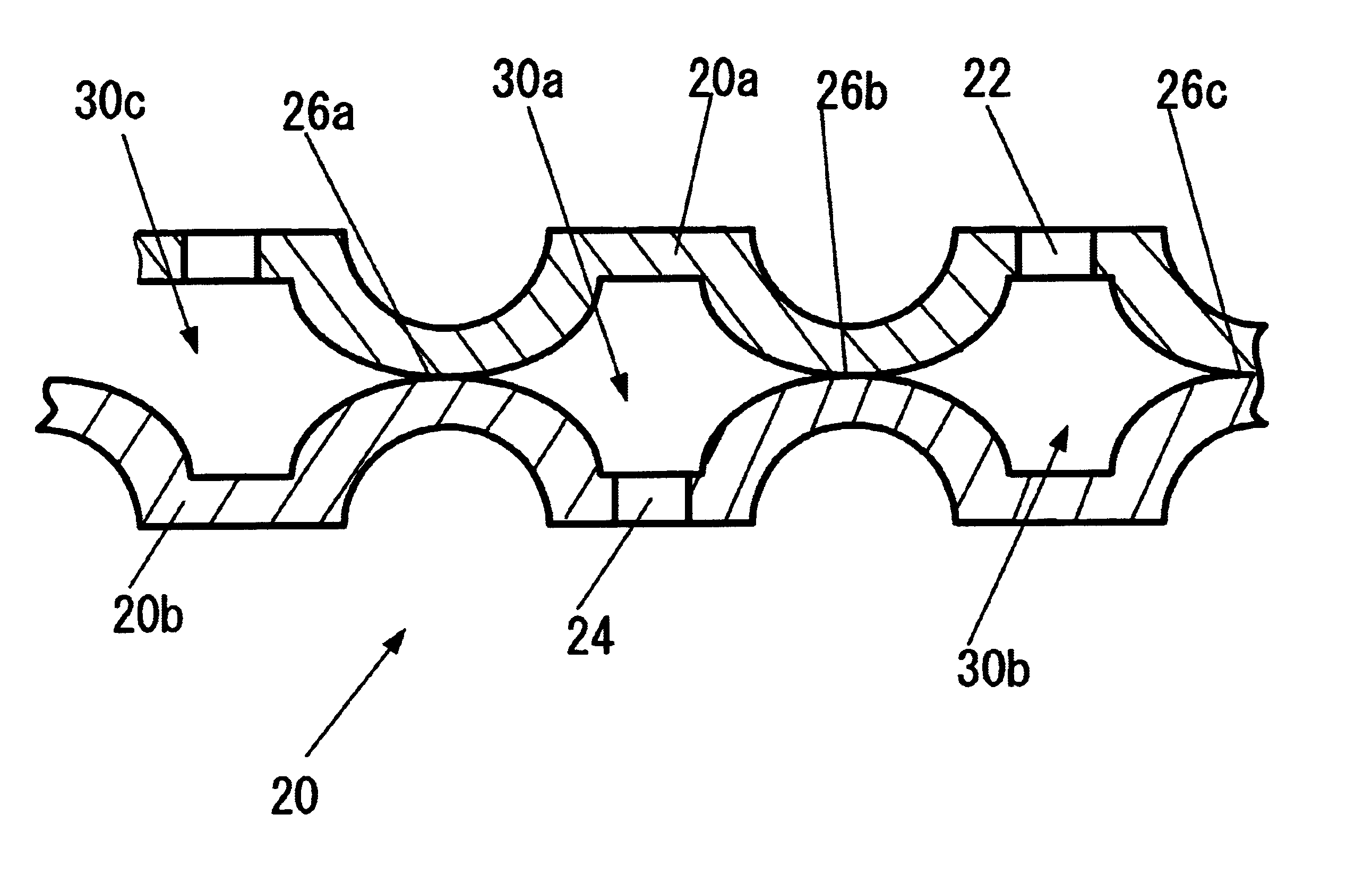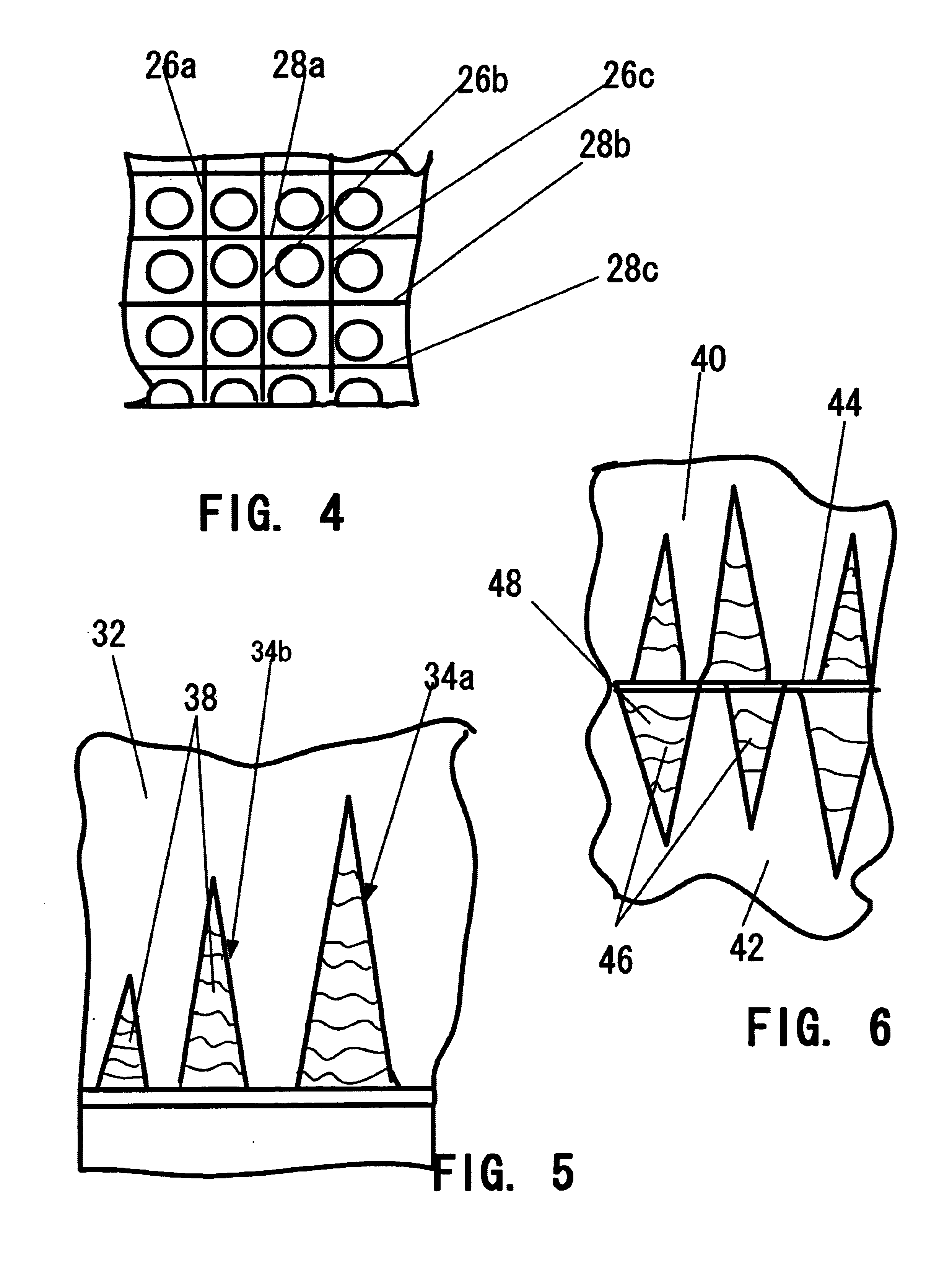Filtering membranes on the basis of welded polymer structures and method for manufacture thereof
a technology of welded polymer structure and filter membrane, which is applied in the direction of lamination, water/sewage treatment, osmosis/dialysis, etc., can solve the problems of inability to increase the amorphous part, the principle does not allow for the distribution of pore density, and the essential disadvantage of the l-s method
- Summary
- Abstract
- Description
- Claims
- Application Information
AI Technical Summary
Benefits of technology
Problems solved by technology
Method used
Image
Examples
example 2
A welded-structure membrane of the type shown in FIG. 1 was made from a plasticized polyvinylchloride (PVC) film having a thickness of 80 microns. The aforementioned PVC film had the following characteristics:
For amorphization of the film surface, prior to welding the film was stretched in a isopropyl alcohol at 20.degree. C. on an installation of the type shown in FIG. 7. The films were treated in accordance with the procedure described above with the distinction that only one film, i.e., the film 56, was stretched at a rate of (1 to 5).times.10.sup.-2 / min. Speed of stretching was controlled by means of the pulling roller 76. The film was stretched with elongation of 20%. The volume of crazes formed in the surface area of the film 56 was 0.19 cm.sup.3 per 1 cm.sup.3 of the volume in the initial film.
Perforations than has been made in both films 58 and 60 with the use of the perforation device 84 and 86. The films were pulled with the use of pulling roller 80 and 82 so that to prev...
example 3
Samples of the membranes were prepared by the same method as in Example 2, with the exception that both films, i.e., the film 60 and the film 56 were stretched in a surface-active medium containing 5% channel black with the particle size of 250 Angstroms. The structure of the materials in the area near welding seam was similar to the one shown in FIG. 6, where reference numeral 44 designate the welding and where reference numeral 46 designates particles of the channel black within the volume of the crazes 34b. All further operations associated with manufacturing of the membranes and with their test were the same as in Example 2.
The test has shown that at separation coefficient equal to 4, penetrability through 1 cm long welding seam of isopropyl alcohol corresponded to 0.7 g / hr, while the channel black was separated in an amount of 97-98%. In this case, penetrability through one 1 m.sup.2 membrane during 24 hours (D) will be equal to:
672 kg / m.sup.2.times.D.
With all other conditions ...
PUM
| Property | Measurement | Unit |
|---|---|---|
| thickness | aaaaa | aaaaa |
| thickness | aaaaa | aaaaa |
| thickness | aaaaa | aaaaa |
Abstract
Description
Claims
Application Information
 Login to View More
Login to View More - R&D
- Intellectual Property
- Life Sciences
- Materials
- Tech Scout
- Unparalleled Data Quality
- Higher Quality Content
- 60% Fewer Hallucinations
Browse by: Latest US Patents, China's latest patents, Technical Efficacy Thesaurus, Application Domain, Technology Topic, Popular Technical Reports.
© 2025 PatSnap. All rights reserved.Legal|Privacy policy|Modern Slavery Act Transparency Statement|Sitemap|About US| Contact US: help@patsnap.com



